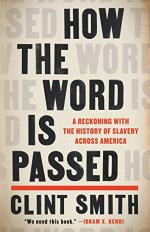|
This section contains 1,461 words (approx. 4 pages at 400 words per page) |

|
Summary
In “The Whitney Plantation,” at the Whitney Plantation, Smith studies the “renderings of a violent past” (52). The plantation has an exhibit for the “largest slave rebellion in US history” (53). After 55 enslaved men, “led by Charles Deslondes,” staged an uprising at the plantation in 1811, they were put to death (53). Unlike other rebellions, “the 1811 slave revolt has received little attention in the collective public memory” (55). It happened at a time when the government was “defending the institution of slavery,” particularly in Louisiana (55). The Whitney, therefore, is different from “any other plantation in the country,” as it makes “the story of the enslaved the core of the experience” (56).
Before meeting with “John Cummings, the owner of the Whitney from 1999 to 2019,” Smith talked with Yvonne Holden, the Whitney's “director of operations” (57, 58). She conveyed her story to Smith, explaining her desire “to do something...
(read more from the The Whitney Plantation - Angola Prison Summary)
|
This section contains 1,461 words (approx. 4 pages at 400 words per page) |

|




